Digital Poster
Heart Failure, Oncology, Myocarditis
ISMRM & ISMRT Annual Meeting & Exhibition • 10-15 May 2025 • Honolulu, Hawai'i

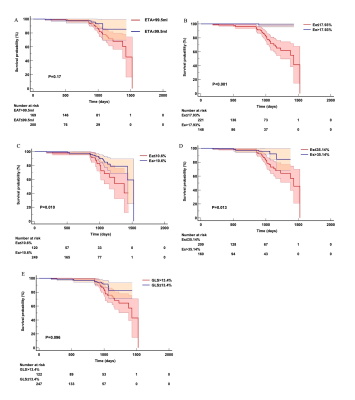 |
Computer Number: 33
4158. Prognostic
impact of epicardial adipose tissue and cardiac magnetic
resonance left atrial strain analysis in patients with heart
failure with preserved ejection fraction
Y. Li, S. Liu, Y. Li, G. Wang, X. Gu, Y. Zhao, J. Lian, Y.
Sun
the Second Affiliated Hospital of Harbin Medical University, HarBin, China
Impact: Our research elucidates that increased EAT
thickness in patients with HFpEF suggests o left ventricular
dysfunction, while early abnormalities in LA function can
serve as a predictor of adverse prognosis.
|
|
 |
Computer Number: 34
4159. Novel
Insights into Left Atrial Mechanics: Prognostic Value of Left
Atrial Contractile Index in Heart Failure with Preserved
Ejection Fraction
L. Zhu, J. He, J. Xu, W. Yang, S. Zhao, M. Lu
Fuwai Hospital, Chinese Academy of Medical Sciences and Peking Union Medical College, Beijing, China
Impact: A novel index derived from CMR-FT—LA contractile
index shows its potential as a robust predictor of adverse
outcomes in patients with HFpEF, providing novel insights
into the pathophysiology and prognostication of this
condition.
|
|
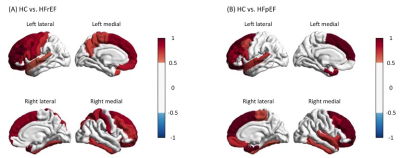 |
Computer Number: 35
4160. Cortical
Thickness Alterations and Cognitive Impairment in Heart Failure:
A One-Year Follow-up Study
C. Zheng, Y. Cui, R. Qin, X. Su, Y. Hu, Y. Yang, J. Lu
Xuanwu Hospital, Capital Medical University, Beijing, China
Impact: This study provides new insights into cognitive
impairment mechanisms in HF, aiding non-invasive glymphatic
dysfunction assessment.
|
|
 |
Computer Number: 36
4161. Association
of right ventricular structure and function with Heart Failure
with reduced and preserved Ejection Fraction: the MESA study
B. Ambale Venkatesh, M. Mukherjee, A. Abdollahi, O. Chehab,
R. Zeitoun, V. Varadarajan, C. Wu, G. Barr, W. Post, N.
Allen, S. Kawut, D. Bluemke, J. Lima
Johns Hopkins University, Baltimore, United States
Impact: We have identified a subset of individuals with
a unique phenotype of supernormal RV ejection fraction that
may be at a higher risk of heart failure with preserved
ejection fraction.
|
|
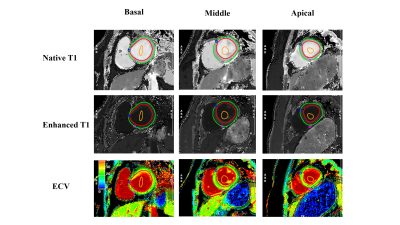 |
Computer Number: 37
4162. Diagnostic
Value of Cardiac Magnetic Resonance Parameters in Distinguishing
HFpEF from Normal Cardiac Function
Y. Hao, R. Zhang, Y. Zhu
The First Affiliated Hospital of Xi'an Jiaotong University, Xi'an, China
Impact: The findings of this study could improve early
detection of HFpEF, leading to better clinical management
and improved patient outcomes.
|
|
 |
Computer Number: 38
4163. Longitudinal
myocardial T2* mapping to identify anthracycline-induced
cardiotoxicity in patients with breast cancer
C. Tu, H. Shen, J. Zhang
Chongqing University Cancer Hospital, Chongqing, China
Impact: Myocardial T2* mapping can identify subsequent
CTRCD in patients with BC receiving anthracyclines
with/without trastuzumab. This may facilitate accurate
prediction of cardiotoxicity and personalized treatment
decision making in breast cancer.
|
|
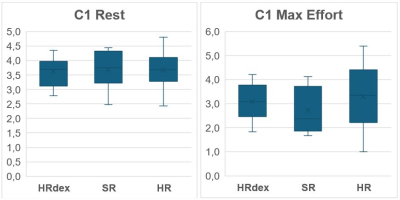 |
Computer Number: 39
4164. Prediction
of the mechanical properties of the myocardium from CMR clinical
type protocol in acute lymphoblastic leukemia survivors.
D. Perie, D. Curnier
Polytechnique Montreal, Montreal, Canada
Impact: We proposed a useful method to quantify
mechanical properties from CMR. The stiffness might unmask
potential cardiac conditions not observable in resting
condition. Thus, in combination with exercise CMR, this
method could be applied to early diagnosis of
cardiomyopathies.
|
|
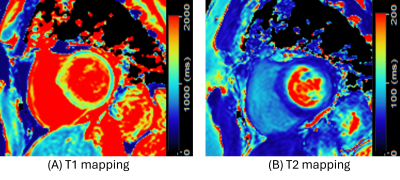 |
Computer Number: 40
4165. Use
of ECG-triggered 3D-QALAS Multitasking sequence for Quick
Myocardial Quantification in Cardio-oncology setting
P. Doctor, F. Khashami, T. Hussain, V. Zaha, Q. Zou
UT Southwestern Medical Center, Dallas, United States
Impact: Multitasking myocardial quantification is a fast
method for assessing T1 and T2 relaxation properties that is
helpful in a wide range of cardiovascular disorders.
Multitasking T1 and T2 relaxation values correlate with
standard imaging techniques.
|
|
 |
Computer Number: 41
4166. Assessment
of Anthracycline-Induced Effects on Pericardial Adipose Tissue
Using Magnetic Resonance Imaging: An Animal Study
X-y Kou, M-x Li, X-y Zhang, J. Chen
The Affiliated Hospital of Southwest Medical University, Luzhou, Sichuan , China
Impact: Our experimental findings revealed changes in
PAT during the chemotherapy cycle and validated its
diagnostic efficacy, offering a new basis for cardiac injury
detection and dose individualization of chemotherapeutic
agents.
|
|
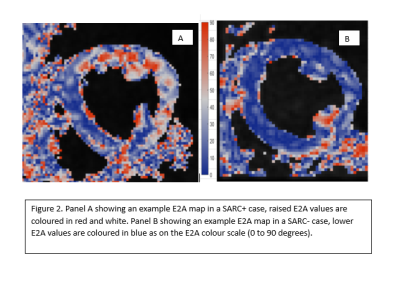 |
Computer Number: 42
4167. Sensitivity
of STEAM DT-CMR diastolic secondary eigenvector angle to
abnormal microarchitecture in early-stage hypertrophic
cardiomyopathy
M. Lacharie, P. Gatehouse, L. Finnigan, N. Beyhoff, M.
Cavanagh, Z. Ashkir, R. Mills, D. Tyler, S. Neubauer, E.
Tunnicliffe, B. Raman
University of Oxford, Oxford, United Kingdom
Impact: HCM is linked to the risk of sudden cardiac
death and heart failure. There are now novel treatments
that may cure HCM. Our study highlights the role of DT-CMR
in identifying individuals who may benefit from these
treatments.
|
|
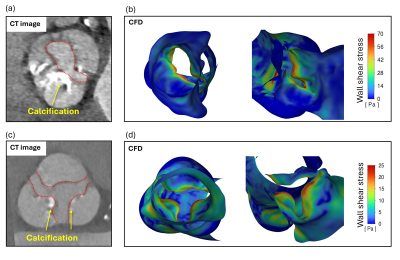 |
Computer Number: 43
4168. Multimodality
imaging and computational fluid dynamics framework for
quantifying wall shear stress on aortic valve leaflets in aortic
stenosis
M. Kim, M. Jankowski, J. Lindner, M. Markl, J. Thomas, J.
Lee
Northwestern University, Chicago, United States
Impact: This framework enables precise WSS mapping on
aortic valve leaflets, supporting better AS progression risk
assessment. Future investigations could validate the direct
use of in-vivo 4D MRI combined with CFD, improving
non-invasive diagnostics and treatment planning in AS
patients.
|
|
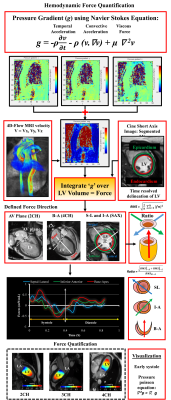 |
Computer Number: 44
4169. Physiological
Pattern of Hemodynamic Forces in Mitral Patients with Normal
Systolic Function: A Non-invasive Approach Through 4D-Flow MRI
M. Srabanti, L. Kadem, J. Garcia
University of Calgary, Calgary, Canada
Impact: The integration of hemodynamic forces as a
biomarker paves the way for innovative research
opportunities, potentially revolutionizing non-invasive
diagnostics. This study aims to enhance mitral regurgitation
assessment, empowering clinicians for timely interventions
and improved patient management.
|
|
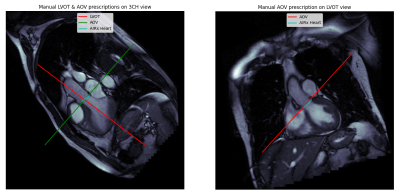 |
Computer Number: 45
4170. Automated
prescription of left ventricular outflow tract and aortic valve
views with a U-Net model
G. Delso, E. Ali, J. Names, A. Hsiao, D. Rettmann, M. Janich
GE HealthCare, Barcelona, Spain
Impact: The proposed model can replicate the
prescription skills of expert CMR operators, for LVOT and
AoV views. Ongoing work will assess its impact on clinical
workflows and validate its performance in diverse patient
populations to ensure robustness in practice.
|
|
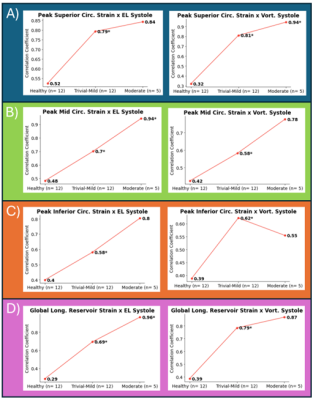 |
Computer Number: 46
4171. Evaluation
of Left Atrial Intracardiac 4D Flow–Wall Mechanics Coupling in
Secondary Mitral Regurgitation
R. Sarnari, S. P. Sreedhar, M. S. Elbaz
Northwestern University, Chicago, United States
Impact:
Analysis of left atrial flow dynamics/wall mechanics provide a physiology based analysis of secondary mitral valve regurgitation (MVR). This opens the door to analyzing different types of MVR (primary vs secondary) and other cardiac pathologies from a flow/mechanics perspective. |
|
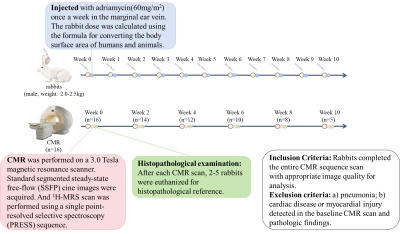 |
Computer Number: 47
4172. Evaluation
of anthracycline-induced cardiotoxicity using 1H-MRS compared
with cardiac functional parameters: an animal study
X-y Kou, Y-l Tu, X-y Zhang, J. Chen
The Affiliated Hospital of Southwest Medical University, Luzhou, Sichuan , China
Impact: This 1H-MRS
study should offer an alternative for early identification
of cardiac injury in patients with anthracycline-induced
cardiotoxicity (AIC) and have potential for personalized
dosing strategies of chemotherapeutic agents.
|
|
|
Computer Number:
4173. WITHDRAWN |
The International Society for Magnetic Resonance in Medicine is accredited by the Accreditation Council for Continuing Medical Education to provide continuing medical education for physicians.